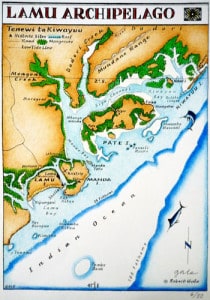Kenyan safari Coastal regions & Mombasa Safaris
Mombasa Safaris
Africa’s oldest harbor city, Mombasa, is Kenya’s ancient and historic coast capital. The modern port handles most of the shipping for the East Africa region, while Moi International Airport is a gateway for tourists seeking an exclusive beach holiday on the Kenyan coast. These are the Kenyan coastal regions.
The South Coast
Kenya’s magnificent South Coast stretches from 50km south of Mombasa. It holds the immaculate beaches of Diani, Galu, Tiwi and Msambweni. Diani is the heart of the South Coast which both local and international tourists love visiting. It is one of the most popular beaches on the Kenyan coast for its very wide white sandy beach, beautifully fringed with palms. Diani has its own airstrip at Ukunda with daily scheduled flights from Nairobi and to most of the Kenyan National Parks and Wildlife Conservancies.
Shimba Hills National Park is only a short distance away and is an attractive 1 or 2 day getaway for some nearby game viewing.

The North Coast
Renowned for accessibility, beauty, and diversity of marine life, Malindi and Watamu, just north of Mombasa, form a Marine Reserve covering an area of 261km² with long stretches of casuarina-fringed white sandy beaches. Watamu is also home to the stunning Mida Creek mangrove forest, which is excellent for bird watching.
Fort Jesus, one of the 3 UNESCO World Heritage sites on the Kenyan coast, was built by the Portuguese to protect the port of Mombasa and is one of the most well-preserved examples of 16th-century Portuguese military fortification and a landmark in the history of this type of construction. It is a must visit while on the North Coast.
The North Coast also holds the scenic Lamu Archipelago comprising of three tropical islands: Lamu, Manda, and Pate. Lamu’s unique blend of pristine beaches, rich history, gentle Islamic ambiance, and an atmospheric old town makes this island one of Kenya’s most remarkable destinations. The town’s fascinating cultural heritage is embodied by the distinctive architecture of Arab, Indian and British designs. Life in Lamu has continued unhurried and barely changed for over 400 years, its winding medieval streets and bustling markets enable tourists to have a variety of souvenirs they love to keep.

Lamu Archipelago – 3 tropical islands: Lamu, Manda, and Pate
The Kiunga Marine National Reserve is 20 miles to the north and a tropical paradise of dazzling coral formations, colorful marine life, turquoise lagoons and endless sand dunes. The reserve covers an area of 270km² and incorporates over 50 offshore islands in the Lamu Archipelago. Visitors can land on a small airstrip in Kiwayu or enjoy a thrilling boat ride from Lamu.